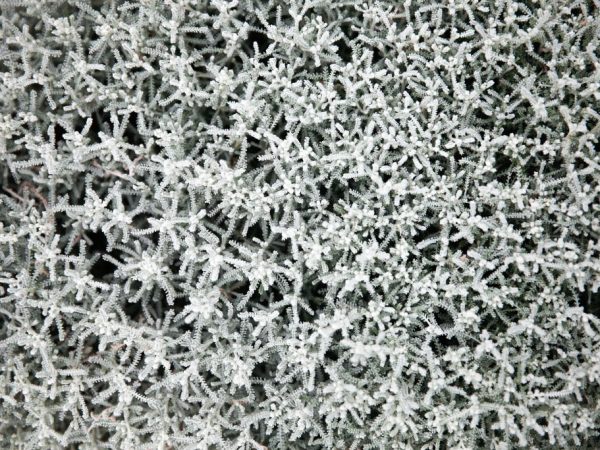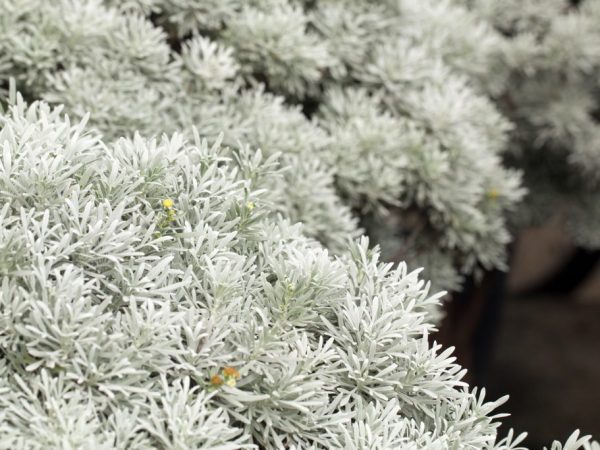Features of decorative garden wormwood
Wormwood has long been familiar to mankind for its enchanting aroma and intoxicating effect, which was actively used by shepherds. It is also used for the production of certain drinks, such as vermouth or absinthe. However, at the moment, decorative wormwood has gained wide popularity, which not only smells good, but also has an unusual appearance. That is why it has become popular among landscape design lovers.

Features of decorative garden wormwood
Description of wormwood
This plant is very unpretentious, it can grow in almost any conditions.
Wormwood is a perennial shrub species, reaching 20 to 150 cm in height, depending on the variety. However, there are annual and biennial plants and grasses, as well as shrub species.
The stem is straight, the leaves are feather-shaped, on which a whitish bloom is observed. This creates the feeling that the plant glows with silvery colors.
Types of wormwood
Wormwood can be classified into several types:
- Wormwood. Often, this wild plant is found in fields and along roads. Due to its unusual smell and bitter taste, it began to be used for the manufacture of alcoholic beverages. In addition, bitter wormwood has medicinal properties that are actively used in folk medicine;
- Tarragon. This herb has found its use in cooking, as a seasoning for meat dishes or pickles;
- Medicinal has a delicate lemon scent, it is known as a natural remedy for moths;
- Ornamental wormwood or another name - garden. There are undersized or tall varieties. Blooming wormwood has white or light yellow inflorescences that give off a strong sweetish aroma.
Reproduction of garden wormwood

The plant does not like excess moisture
The type of decorative wormwood has gained particular popularity among gardeners because of its unpretentiousness. It can be planted in direct sunlight or in areas with high soil freezing.
It is important that there is no high humidity at the place of planting, because wormwood, like any other plant, can rot the roots due to an excess of moisture. This shrub is drought tolerant, so it does not need frequent and abundant watering.
Reproduction of garden wormwood can be done in different ways:
- seeds;
- dividing the bush;
- cuttings;
- part of the rhizome.
In order to properly propagate the bush, it is necessary to plant the separated part in the soil, previously fertilized with compost. Division by cuttings is carried out at the end of May. For this, strong, healthy shoots from 7 to 10 cm long are selected. Initially, they are planted in boxes with loose soil, in which the wormwood will take root throughout the year. Then it can be transplanted into open ground.
Early spring is most suitable for propagation with seeds. In early April, they are planted in greenhouses. When young plants reach 10-15 cm, they are dived into separate pots, 1-3 pieces in each.
Application of garden wormwood
Due to the variety of shades of leaves from bluish-green to bluish-silver, decorative wormwood is actively used to decorate the garden plot. It is also used to decorate curbs or bouquets.
Low-growing varieties are suitable for planting near paths or on alpine slides. Tall varieties are used for a variety of flower beds. Sometimes gardeners plant wormwood between currant bushes. This method prevents the appearance of rust on its leaves.
From spring to late autumn, the shrub retains the brightness of colors and color saturation, which allows you to combine it with any plants. This is a great decoration for a flower bed, which easily tolerates cutting branches, which allows you to give the plant any shape, depending on the wishes of the designer.
Dilute wormwood with other aromatic herbs such as thyme, lavender or sage to create a uniquely scented flower garden.
However, do not forget that thanks to the spread of the long roots of ornamental wormwood, it is able to move around the garden. Basically, it stays in one place for 2 years, after which it begins to sprout small shoots. Therefore, it is best used in compositions that have no clear boundaries.

